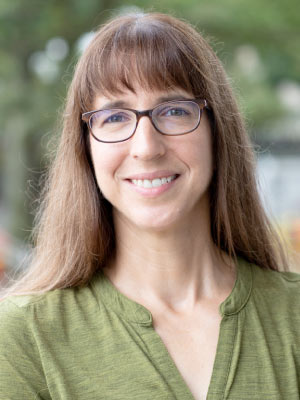
I’m happy for this opportunity to introduce myself and to write about the Center for Sustainability and the Global Environment (SAGE), which has been my professional home for over 20 years! After a PhD in environmental engineering and a postdoc in atmospheric chemistry, I joined SAGE when it was new. In 2001, the center comprised one research group working in the nascent disciplines of ecosystem and land-use simulation modeling. Now SAGE houses 10 research programs, all using different types of data, investigative methods, and ways of looking at the world. It has been both exciting to see the growth and challenging to navigate the changes during my 12 years as SAGE’s director.
The overarching goal of SAGE is to help sustain the planet by doing policy-relevant environmental science and sharing it with a broad range of stakeholders. SAGE began with 100 percent quantitative work, especially computer simulation modeling of the biosphere and atmosphere which is driven by input data, equations, and parameters. However, as environmental sustainability science matures, it is clear that successful application of ideas and analysis requires deep engagement, not only with the numbers but also with the other people involved — farmers, air-quality regulators, meatpackers, conservationists, public health workers, K-12 educators — to name examples from SAGE’s work. These interactions not only ground research in reality, they also help to frame the work in terms of environmental justice. Whether advances in alternative energy, new schemes for forest conservation, or food-labeling rules to govern supply chains, both problems and solutions must be considered together with our stakeholder-partners, since the impacts on human health and livelihood can be profoundly unequal.
As SAGE has changed, it has also grown: numbers of faculty and students, total competitive grant dollars from a wider range of sponsors, papers published, media notices, etc. Perhaps the most noticeable growth is in the number of research, outreach, and administrative staff. Gone is the day when a professor and their student wrote a grant for a few thousand dollars and expected to get the award. With intense competition for complex multi-institutional grants, research programs need permanent professional scientists to maintain continuity and administrative staff to navigate the rules. We are very grateful to Nelson Institute and to our sister center, the Center for Climatic Research, for finding creative ways to pool resources and co-operate for everyone’s success in this rapidly changing “ecosystem!”
Although SAGE folks were super productive during COVID, our group “culture” has suffered, just like everywhere else. With a mix of internal and external events, including Weston Roundtable lectures and Energy Analysis and Policy productions, we are working to forge a new culture based on the best of the old. Check out SAGE’s website, The Commons, or join the sagefriends email list to keep track of how we are doing!
Carol Barford
Director, Center for Sustainability and the Global Environment
Meet Carol Barford
Director Facilitator
When it comes to her role as director, Barford doesn’t take the title as a verb. “As the director, you’re a facilitator. If you’re directing anything, you’re directing what resources are available to support the research,” she says. “It’s actually service; to be the director is to serve that unit.” In addition to helping operations run smoothly, Barford also works hard to keep SAGE’s culture strong. “SAGE has always had a strong culture. Many ‘SAGEs’ are very committed to sustainability in their lifestyles as well as their professions,” she says.
What is Sustainability for 500
SAGE hosts a weekly lecture series and 1-credit class called the Weston Roundtable Series — and it’s the class Barford recommends to anyone who asks. “It helps students with all different academic backgrounds to tighten down their idea of what sustainability is,” she explains. When a product is labeled as “sustainable,” is it just a marketing buzzword? “I like to poke fun at my ‘sustainable cashmere sweater.’ What does that mean?” she laughs. “If you want to categorize something as sustainable, does that mean it will last for a long, long time, or the processes that contribute to it will last for a long, long time … or, it has minimal impacts on the rest of the world so the world can last for a long, long time?”
Keep on the Bright Side
When a new scary statistic or fresh climate horror makes the news, it can be tough to both internalize it and keep going about your day. “I think that people who work in sustainability science and studies have to cultivate a deep optimism,” Barford says. “By that, I mean the acknowledgement of the problem and at the same time the willingness to keep plugging, to keep devoting intellect and energy to what you think is important.” So … is there a reason for deep optimism? “You never know exactly what’s going to happen, so you can’t give up!” Barford says with a smile.